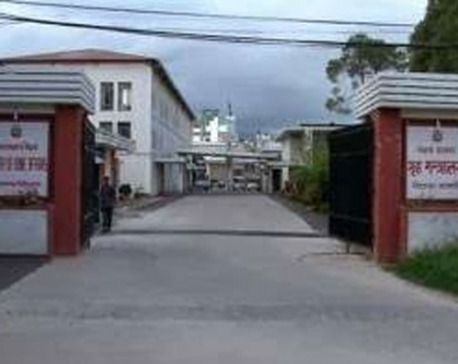
OR
Ensure fair distribution of relief, aids
Published On: April 9, 2019 02:05 AM NPT By: Republica | @RepublicaNepal
The deadly rainstorm that hit the poor settlements in Bara and Parsa districts on March 31 left 28 people dead, displaced hundreds and destroyed large number of houses. Right after deaths and devastation were reported, actors—from common citizens to political party leaders to chief ministers to prime minister—sprang into action to reach out and help the survivors in every possible way. Prime Minister KP Oli reached the sites and assured victims of all the state support. Nepal Communist Party lawmakers announced to donate one day’s salary amount, Nepali Congress lawmakers went a step ahead and offered two days’ salary. Province 2 government announced to provide Rs 300,000 to each victim family. Other provincial governments also announced monetary support for the storm survivors—with Karnali province, Province 3 and Far-west Province declaring 10 million rupees each for the survivors. Besides, various international organizations based in Kathmandu, social organizations and youths from hills, mountains and the plains have stood untied to aid the victims. They are collecting relief materials and are going to storm hit districts to alleviate the sufferings. Nepalis have always stood together when their fellow brothers and sisters are in hardships—especially during the times of disasters. The sense of solidarity we demonstrate during such times generates hope and unity.
However, reports from the ground suggest that a good number of victims are still spending nights under the open sky. They are not getting even tarpaulin tents to create temporary shelters, and women and children are not getting food. On the other hand, reporters on the ground also say that many more relief materials—including food items and utensils—than needed have been collected and they are lying idle inside various stores. This mismatch between abundance of relief materials and scarcity of the same for the victims on the ground needs to be corrected first and foremost. If we fail to make distribution of aids and relief materials smooth, fair, equal and transparent by avoiding duplication, all the aids and outpouring of support will mean nothing for the real victims. During the earthquake disaster in 2015, similar stories had unfolded in a number of quake hit districts. While some families were hoarding relief materials others were struggling to get a piece of tarpaulin tent or a sack of rice. This must not be repeated in Bara and Parsa.
The poor and economically vulnerable communities have been hit hard by the disaster. The storm destroyed weak houses. Concrete houses and families living there in somehow survived. It is these poor who lack access to water, food and clothes. Leaders from Kathmandu are making rounds of affected settlements and expressing solidarity and support. This empathy for the survivors is welcome and should continue. But at the moment, more than mere promise and commitments, the survivors need to be provided with what they need the most—basic relief materials. If political leaders from Kathmandu direct or mobilize their cadres on the ground and the local government representatives to ensure fair distribution of relief and food materials, survivors will feel big relief. The focus of the central, provincial and local governments at the moment should be on ensuring that not a single storm victim will be left out in distribution of relief materials.
You May Like This

Youths of Jajarkot collect relief for the storm victims of tarai
JAJARKOT, April 4: Youths of Jajarkot have decided to join hands to support the victims of Province 2, who have... Read More...

MoHA calls Disasters Relief, Rescue Committee meeting
KATHMANDU, April1: A meeting of the Central Disasters Relief and Rescue Committee under the Ministry of Home Affairs is scheduled... Read More...

Excessive cold claims two in Bara and Parsa
BIRGUNJ, Dec 14: Two persons died of hypothermia in Bara and Parsa districts resulting from excessive cold gripping the mid... Read More...

Just In
- World Malaria Day: Foreign returnees more susceptible to the vector-borne disease
- MoEST seeks EC’s help in identifying teachers linked to political parties
- 70 community and national forests affected by fire in Parbat till Wednesday
- NEPSE loses 3.24 points, while daily turnover inclines to Rs 2.36 billion
- Pak Embassy awards scholarships to 180 Nepali students
- President Paudel approves mobilization of army personnel for by-elections security
- Bhajang and Ilam by-elections: 69 polling stations classified as ‘highly sensitive’
- Karnali CM Kandel secures vote of confidence


















Leave A Comment